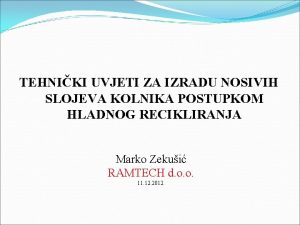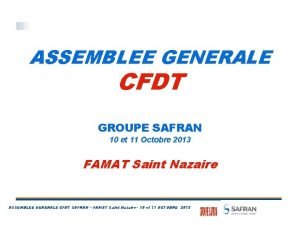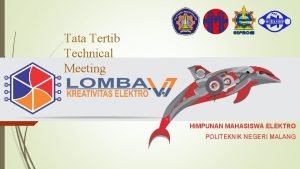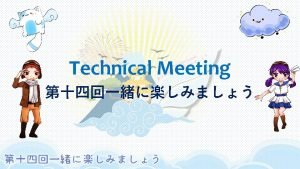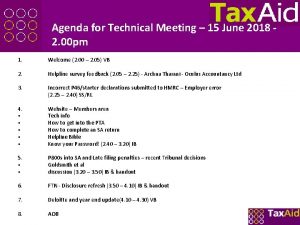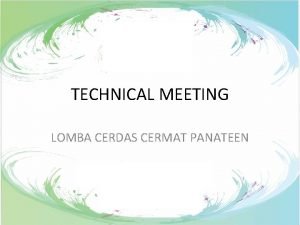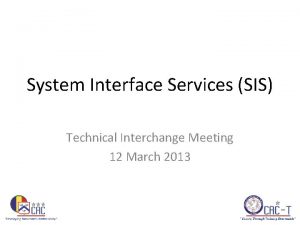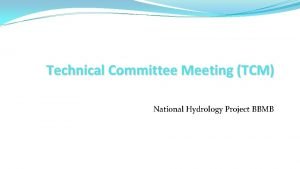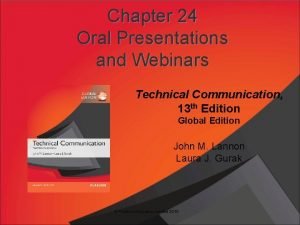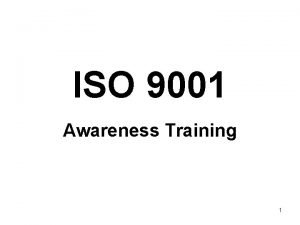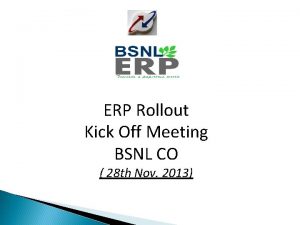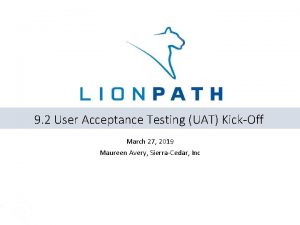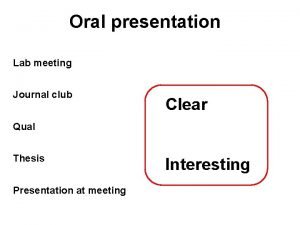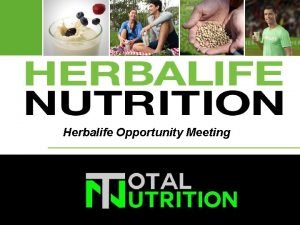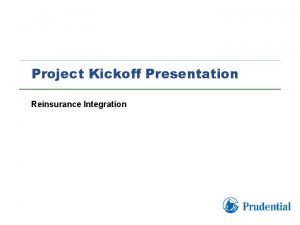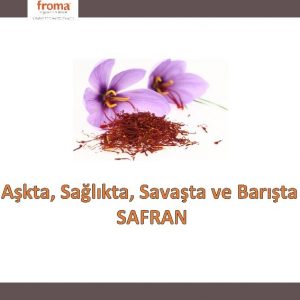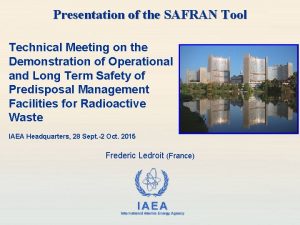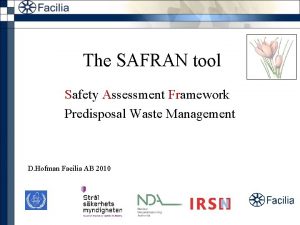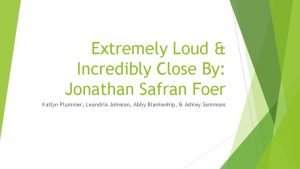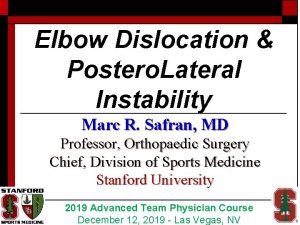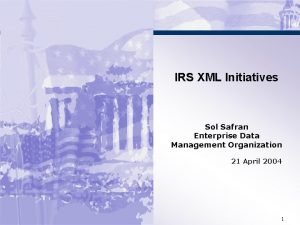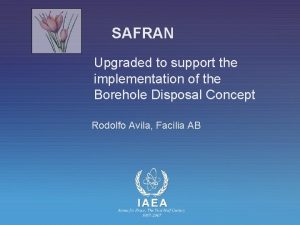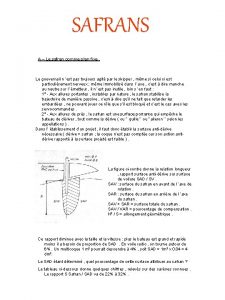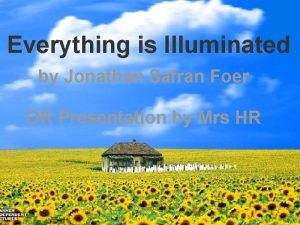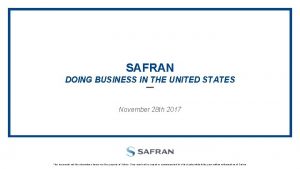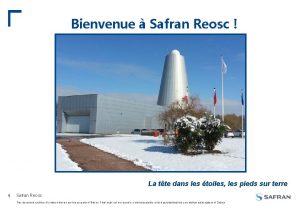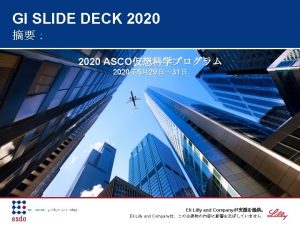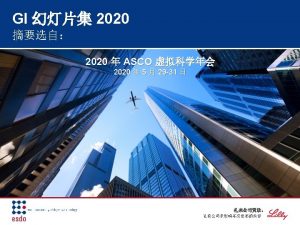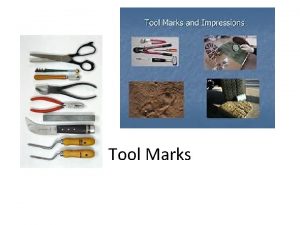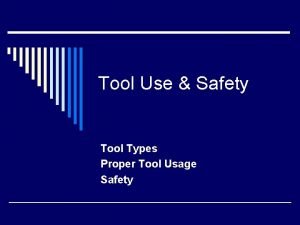Presentation of the SAFRAN Tool Technical Meeting on










































- Slides: 42

Presentation of the SAFRAN Tool Technical Meeting on the Demonstration of Operational and Long Term Safety of Predisposal Management Facilities for Radioactive Waste IAEA Headquarters, 28 Sept. -2 Oct. 2015 Frederic Ledroit (France) IAEA International Atomic Energy Agency

SAFRAN A software package facilitating development of safety assessment of predisposal waste management activities and facilities IAEA International Atomic Energy Agency

Purpose of SAFRAN Implements methodologies developed within the SADRWMS project. It provides aid in: • Describing predisposal radioactive waste management activities in a systematic way, • Conducting the safety assessment with clear documentation of the methodology, assumptions, input data and models, • Establishing a traceable and transparent record of the safety basis for decisions on proposed waste management solutions, • Demonstrating clear consideration of and compliance with national and international safety standards and recommendations. IAEA

Benefits of SAFRAN • Implements methodologies that have been conciliated at international level – IAEA standards. • Facilitates performing iterations of the Safety Asessment, for example in case of upgrades of facilities, if new waste streams appear, etc. • Several experts can work more effectively in the same safety assessment. SAFRAN facilitates exchange of experience through sharing projects and databases. • Facilitates regulatory review by providing a transparent representation of all SA components. The regulator can use the SAFRAN projects in independent safety assessments. • SAFRAN can be used for creating generic safety assessments. IAEA Overview of SAFRAN Tool 4

SAFRAN components SAFREQ Report System description Site features, waste producers, waste streams Regulatory Framework Safety Assessment Normal Operation, Accidents SAFCALC IAEA Report DATABASE

System Description For each configuration • Site • Facilities • Rooms • Areas (Storage or Processing) Physical elements Safety elements • Waste Management Activities • Processes • Check for clearance • Waste Producers • Primary Waste Components • Waste Streams IAEA

Types of safety elements • • Site selection Safety functions Limits and conditions Mantainance requirements Operational procedures Emergency procedures Management systems Can be linked to physical elements and assessments IAEA

Waste management activities • • Description Output(s) from activities Reduction factors One and only one WMA can be assigned to an area IAEA

Reduction factors • Define how the activity changes the waste properties: Volume, mass and activity Sorting of waste Output Volume Mass Activity Combustible 5% 5% 5% Non combustible 95 % IAEA

Check for clearance • Possible to make comparisons of activity concentrations in the waste components against IAEA´s and user defined clearance criteria • Clearance criteria are defined for unconditional clearance of solid materials and expressed in Bq/g IAEA

Processes • A process is a sequence of WMAs which can be used in defition of Waste Streams (WS) IAEA

Waste Streams • Waste streams represent the fate of waste components through different steps of processing, storing and clearing of wastes • Consider changes of waste properties in these steps. IAEA

IAEA

SAFRAN components SAFREQ Report System description Site features, waste producers, waste streams Regulatory Framework Safety Assessment Normal operation, accidents SAFCALC IAEA Report DATABASE

Regulatory Framework • Regulatory requirements • Criteria Doses in during normal operation (Sv/y) and accidents (Sv). Workers and members of the public • Several regulatory frameworks can be added to a project, for example IAEA and national, and all can be used in the SA IAEA

SAFRAN components SAFREQ Report System description Site features, waste producers, waste streams Regulatory Framework Safety Assessment Normal operation, accidents SAFCALC IAEA Report DATABASE

Assessment types • For normal operation and accidents. • Doses to workers and members of the public. • Radiological impacts indoors and outdoors. IAEA

Graded approach to the assessments Impacts Screening or Hazards Dose Assessment IAEA Optional step calculations for standardized conservative exposure situations calculations for specified endpoints and specific exposure conditions

Screening of hazards and Hazard Quotient • Screening of hazards – implementation of the graded approach; • For screening of hazards SAFRAN uses the concept of hazard quotient (HQ) IAEA 19

HQ: External irradiation and inhalation • SAFRAN default values: • Screening dose to worker is 0. 1 m. Sv/y, • Annual worker exposure time is 2000 h/y (i. e. working time is 8 h per day, 5 days per week and 50 weeks per year). • User may set its own value for screening dose rate basing on actual conditions to be assessed. IAEA 20

HQ: Releases to atmosphere • SAFRAN default values: • Screening dose to member of the public is 0. 01 m. Sv/y, • Release to dose calculation factors (m. Sv/Bq) are based on the IAEA Safety Report Series No. 19 defined Generic Environmental Model; • User may set its own value for screening release rate basing on actual conditions to be assessed. IAEA 21

Dose assessments • If scenario is not screened out basing on HQ • dose rate (inside facility) • release / discharge (outside facility) then dose calculation is performed; • Calculation continues with already identified impacting parameters (dose rate, release / discharge rate). IAEA 22

Dose assessments (cont. ) • External irradiation and inhalation: • User defines actual exposure time: • Releases to atmosphere / Liquid discharges • SAFRAN includes database of release to dose conversion factors: IAEA 23

IAEA 24

Dose assessments (cont. ) • Releases to atmosphere / Liquid discharges • SAFRAN includes database of release to dose conversion factors; • SAFRAN includes SAFCALC tool where IAEA Safety Reports Series No. 19 models are implemented and can be used with user defined parameters; • User values of DCF. IAEA 25

Safety Assessment for Accidents • PIE types • External natural • External human induced • Internal • Endpoints definition – several endpoints that can be optionally linked to one or more criteria • Indoors and Outdoors • Dose (Sv) or Other • Scenarios and impacts • PIEs • Scenarios • Impacts IAEA

Assessments for accidents PIE Type PIE 1 Scenario n Impact 1 Impact n Endpoint 1 Endpoint n Ass Case 1 IAEA Ass Case n PIE n Scenario m Impact m Screening of hazards

PIE properties • Relevant or not • Probability (per year or during facility lifetime) • Qualitative: Very Low, Medium, High, Very High • Quantitative: Probability of occuring at least once Default scale of probabilities Qualitative Category IAEA Probability during lifetime Annual probability 1/y Very High > 95 % > 3, 0 E-02 High 75 -95 % 1, 4 E-02 - 3, 0 E-02 Medium 5 -75 % 5, 0 E-04 - 1, 4 E-02 Low 0, 1 -5 % 1, 0 E-05 - 5, 0 E-04 Very Low < 0, 1 % < 1, 0 E-05

Scenario properties • Relevant or not • The probability may or not be the same as the probability of the linked PIE • Several scenarios may be linked to the same PIE, but a scenario can have only one PIE • A scenario may have several impacts and several scenarios can be linked with the same impact IAEA

Properties of impacts from accidents • Relevant or not relevant • Bounded or not (currently practically not used) • Quantitative or qualitative • Indoors or outdoors • Radiological consequences • Indoors: Releases to air, increased direct external exposure and Other • Outdoors: Releases to air, liquid discharges or Other • If the same endpoint is assigned to several impacts of the same scenario, then for this endpoint SAFRAN will also calculate the sum of the doses from all impacts. IAEA

Potentially Affected Inventory (PAI) • Also known as Material At Risk • Is the radionuclide inventory or amount, in Bq, that can be affected during an accident. Examples • The PAI for an accident consisting of dropping a waste package equals the total activity in the package. • The PAI for an accident during a processing activity equals the activity involved in one instance of the activity IAEA

Calculation of PAI • For Storage Areas the PAI is the total activity present in the • • Area, i. e. the summa over all stored Waste Components. For Processing Areas the PAI is the Capacity of the Processing Activity (m 3) multiplyied by the radionuclide concentration in the waste. For each processing activity SAFRAN calculates two PAI values, using the concentrations in the waste before and after the activity. The user has to choose between these. In the PAI calculation for an Area, all Waste Streams passing through this Area are considered. In the PAI calculation for a Room all areas in this Room are considered. In the PAI calculation for a Facility all Rooms in this Facility are considered. IAEA

Release Fractions • Release Fraction (RF) is the fraction of the Potential Affected Inventory that is released to air during the accident. • The RF depends on the Waste Form, the Radionuclide and the Type of Effect of the accident. • Values of RF are given in the SAFRAN Database. • It is assumed that RF correspond to respirable fractions. IAEA

Analysis of the results • Comparison of hazards. • Comparison of doses against regulatory criteria – assessment of compliance. • Definition of modifications of the facilities, waste management activities, existing and new safety elements. IAEA

Example of Probability-Consequence plots HQ/Prob Very Low Medium <0. 1 SC 4 1 -10 SC 2 10 -100 IAEA Very High SC 3 0. 1 - 1 >100 High SC 1

SAFRAN components SAFREQ Report System description Site features, waste producers, waste streams Regulatory Framework Safety Assessment Normal operation, accidents SAFCALC IAEA Report DATABASE

Models available in SAFCALC • IAEA SR-19 models: screening models for routine releases to the atmosphere, lakes, rivers, estuarines and coastal areas. • Model for accidental releases to the atmosphere. • Model for accidental releases inside a room. • Simple dosimetry models: point source, disc, cylinder, cube (with and without shielding) IAEA

Uncertainty analysis • Probabilistic simulations using Monte Carlo random sampling and Latin Hypercube sampling. • Sensititivy analyses using regressions, correlations and variance based methods. IAEA

SAFRAN components SAFREQ Report System description Site features, waste producers, waste streams Regulatory Framework Safety Assessment Normal operation, accidents SAFCALC IAEA Report DATABASE

Database • • • Radionuclide half lives. Clearance levels. Gamma constants – dose rates at 1 m from a point source. Screening dose rates for Normal and accidental situations. Screening release rates for Normal operation. Screening releases for accidental situations. Release Fractions. Dispersion factors. Dose Conversion Factors for Normal and accidental situations. IAEA

SAFRAN website • • • www. safran. facilia. se Free download of the software and documentation Online User Guide Tutorials SAFRAN projects – TINT test case Discussion Forum IAEA

IAEA International Atomic Energy Agency
 Hrvatsko asfaltersko društvo
Hrvatsko asfaltersko društvo Lm launcher
Lm launcher Medea bernard safran
Medea bernard safran žuti šafran
žuti šafran Tomislav šafran
Tomislav šafran Vote.election-europe.com/fcpe-safran
Vote.election-europe.com/fcpe-safran Peraturan technical meeting online
Peraturan technical meeting online Technical meeting lomba online
Technical meeting lomba online Technical meeting agenda
Technical meeting agenda Technical meeting lomba cerdas cermat
Technical meeting lomba cerdas cermat Technical interchange meeting template
Technical interchange meeting template Oas technical meeting
Oas technical meeting Tcm technical committee meeting
Tcm technical committee meeting Today meeting or today's meeting
Today meeting or today's meeting Today meeting or today's meeting
Today meeting or today's meeting What is meeting and types of meeting
What is meeting and types of meeting What is meeting and types of meeting
What is meeting and types of meeting Technical communication powerpoint presentation
Technical communication powerpoint presentation Technical drawing views
Technical drawing views Iso 9001 awareness training
Iso 9001 awareness training Erp kick off meeting presentation
Erp kick off meeting presentation Uat
Uat Lab meeting presentation example
Lab meeting presentation example Herbalife opportunity meeting powerpoint presentation 2020
Herbalife opportunity meeting powerpoint presentation 2020 Team meeting presentation template
Team meeting presentation template Project kickoff presentation
Project kickoff presentation Potter's wheel data cleaning tool
Potter's wheel data cleaning tool Osha hand and power tools powerpoint
Osha hand and power tools powerpoint Hát kết hợp bộ gõ cơ thể
Hát kết hợp bộ gõ cơ thể Lp html
Lp html Bổ thể
Bổ thể Tỉ lệ cơ thể trẻ em
Tỉ lệ cơ thể trẻ em Chó sói
Chó sói Chụp phim tư thế worms-breton
Chụp phim tư thế worms-breton Chúa yêu trần thế
Chúa yêu trần thế Môn thể thao bắt đầu bằng chữ f
Môn thể thao bắt đầu bằng chữ f Thế nào là hệ số cao nhất
Thế nào là hệ số cao nhất Các châu lục và đại dương trên thế giới
Các châu lục và đại dương trên thế giới Công của trọng lực
Công của trọng lực Trời xanh đây là của chúng ta thể thơ
Trời xanh đây là của chúng ta thể thơ Mật thư tọa độ 5x5
Mật thư tọa độ 5x5 Phép trừ bù
Phép trừ bù Phản ứng thế ankan
Phản ứng thế ankan




